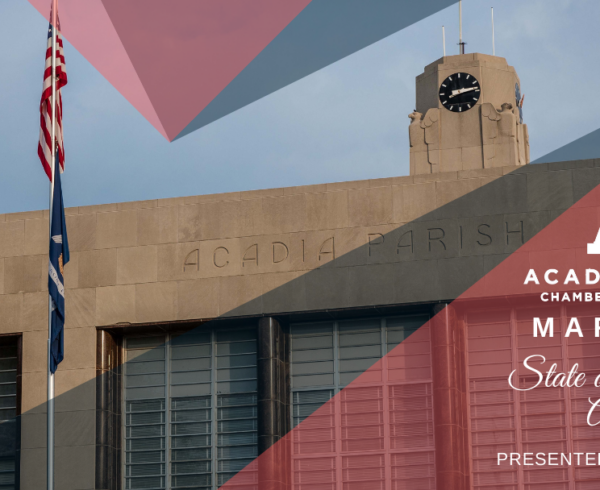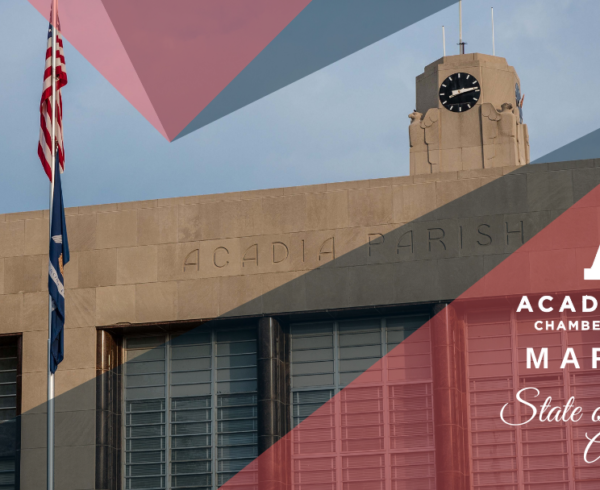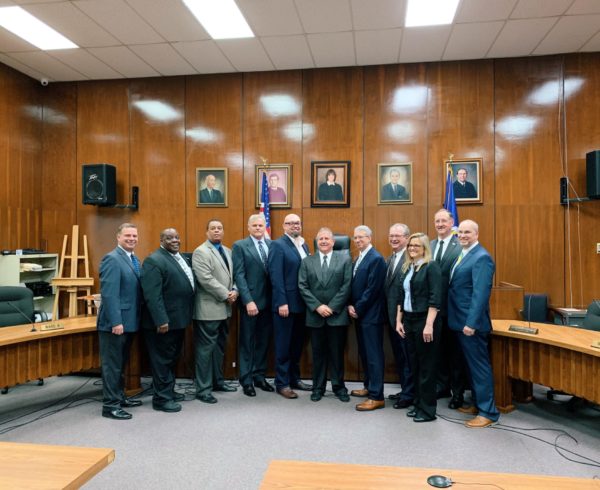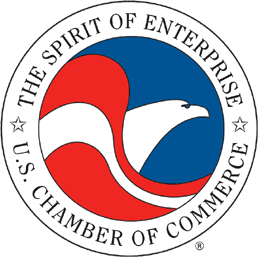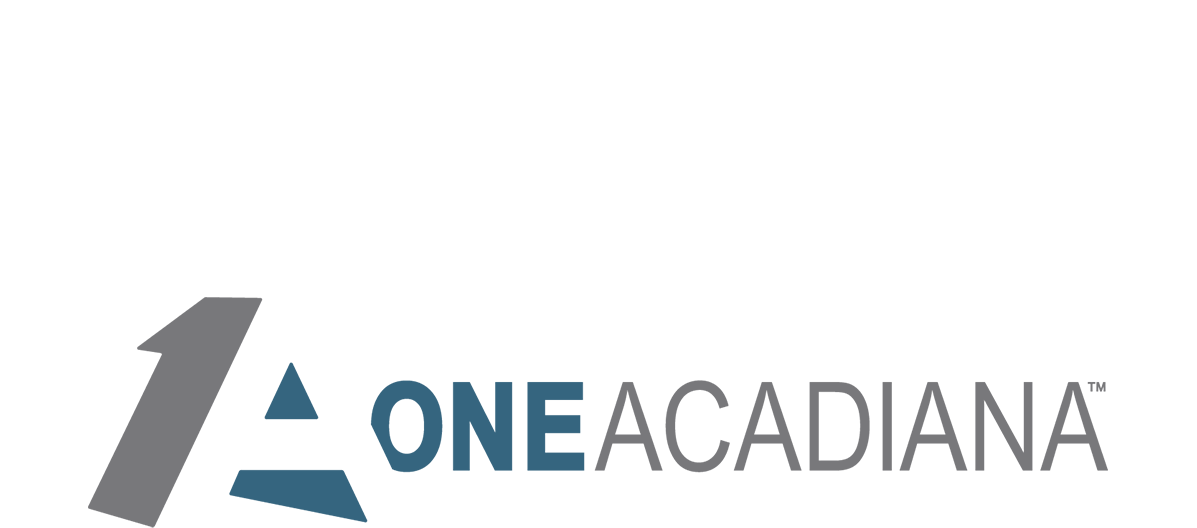The Acadiana Planning Commission recently hosted a virtual Opportunity Zone Asset Mapping meeting for the Town of Church Point.
Kade Jones with APC, “Why are we meeting? The Acadiana Planning Commission serves the public sector in the planning and implantation of economic, community and transportation development throughout the region known as Acadiana, including the Louisiana parishes of Acadia, Evangeline, Iberia, Lafayette, St. Landry, St. Martin and Vermilion.
“The Opportunity Zone Initiative is a federal program that provides tax incentives to potential investors that may want to start up a business in Church Point or one of our other opportunity zones within Acadiana.”
Jones said APC started off with a regional prospectus for all of Acadiana, then Lafayette and another for the university corridor in Lafayette.
“We were recognized by the White House Opportunity and Revitalization Council,” Jones said.
“They liked our work, and now we are developing a prospectus for Abbeville, Breaux Bridge, Church Point, Eunice, New Iberia, Opelousas and Ville Platte, doing community asset mapping where we are giving you kind of the contents of what we are loading into the prospectus and letting you help us fill in the gaps.”
The meeting was hosted on Zoom on Tuesday, August 4.
Those in attendance included Mayor Ryan “Spanky” Meche, Church Point council member Chris Lebas, Le Vieux Presbytere Museum curator Harold Fonte, area realtor Jessica Landry and Amy S. Thibodeaux, President and CEO of the Acadia Parish Chamber.
During the meeting, a brief presentation was given by Jones, and those in attendance were asked to provide feedback about the assets of Church Point and what they would like to see in future economic development.
Utilizing a methodology called “Asset Mapping,” the specific goals of the meeting were to: establish the existing stock of the assets and capitals that constitute Church Point’s current wealth; determine the future desires of the community in terms of investment and development; place the power of decision-making in the hands of the community members; and discover the strength of individuals and their capacities in the community of Church Point to create an action plan that local organizations and partnerships can use to spur action. Feedback and information gathered during this meeting will be used to form the Church Point Opportunity Zone Prospectus being developed by APC.
The asset mapping initiative is being led by Invest Acadiana, a partnership of:
- One Acadiana
- Acadiana Planning Commission
- Lafayette Consolidated Government
- Community Foundation of Acadiana
The partnership’s common goal is to advance Acadiana’s opportunity zones. “The purpose of today’s meeting is to develop a community profile based on the input and then we are going to load that information into our prospectus for Church Point,” Jones said. “It will be used to spark investment in the community and address the capitals that make Church Point unique.” Jones said the methodology used to develop the prospectuses is called Wealth Works.
“This breaks assets of a community into eight categories, the chapters of the prospectus,” he said. “We want to highlight the best things about our communities to attract investors and on the tail end, we are looking to see what the future vision of these communities is and what we would like to see in future economic development.”
During the meeting, the group discussed eight forms of assets: individual capital, intellectual capital, social capital, cultural capital, natural capital, built capital, political capital and financial capital.
Individual capital are the skills and capacity that allow individuals to be productive, and investments on human capital include skill development, education, training and health and maintenance improvement. This also includes the local workforce and major employers.
Church Point’s individual capital includes large employers such as Church Point Wholesale, Richards Cajun Foods, Acadia St. Landry Hospital and the local schools. “Church Point Wholesale is huge and has been here forever,” LeBas said. Individual capital also includes healthcare services like community clinics, pharmacies, nursing homes and rehab facilities.
Intellectual capital includes research and development that supports activities and increases innovation as will as diffusion of knowledge and application. This includes education, work readiness programs, libraries, schools and educational institutions. Church Point’s intellectual capital includes the local schools, the Acadia Parish Library system and area colleges with dual enrollment opportunities.
Social capital includes trust networks and the inclusive relationships needed to get things done. Investments in social capital are those that lead to new conversations, shared experiences and connections between individuals in groups or strengthen relationships within groups. These include religious organizations, civic clubs, nonprofits, networks and groups.
Church Point’s social capital includes the Church Point Community Development Corporation, the Saddle Tramp Club, local chapters of the Knights of Columbus, Catholic Daughters of the Americas and Knights of St. Peter Claver, local Veterans of Foreign War and American Legion posts, Scottie Beans Theater Cafe and Cajun Woodstock.
Church Point’s cultural capital includes the Le Vieux Presbytere Museum, the town’s parks and cultural district, the Acadia St. Landry Hospital Christmas Festival, the adult and children’s Mardi Gras runs, the Our Mother of Mercy’s annual church bazaar and Our Lady the Sacred Heart’s Fall Fest.
Natural capital includes air, water, land, minerals, plants, animals, fish, ecosystem services and parks and recreation. Church Point’s natural capital includes the Gertrude Wimberley Community Center, the town’s playgrounds, tennis and basketball courts, baseball fields, hunting opportunities and the town’s designated bike lane.
Built capital covers a wide umbrella of things that are considered to be a built value or asset of a community, including infrastructure, buildings and historic buildings, roads, transportation, airports, major utility suppliers and things that help facilitate the economy in an area.
Political capital includes forms of government, like police jury and city council and public access to decision makers. Church Point’s political capital, includes City Hall and the police, fire, water, sewer and street departments. This also includes information for any new business wanting to set up in town.
Church Point’s financial capital includes the Acadiana Planning Commission, Invest Acadiana, the Acadia Parish Chamber of Commerce and local banks including Farmer’s State Bank, Home Bank and Rayne State Bank.
Jones said that once the draft of the prospectus is ready, those who attended the meeting will receive a copy to provide feedback on before a finished prospectus is released. There will also be digital versions of the prospectus to serve as a living document that can grow as a town evolves.
For more information regarding Opportunity visit www.InvestAcadiana.com and www.planacadiana.org/opportunityzones.
Original article by Claudette Olivier, editor of Church Point News, on August 26, 2020.




